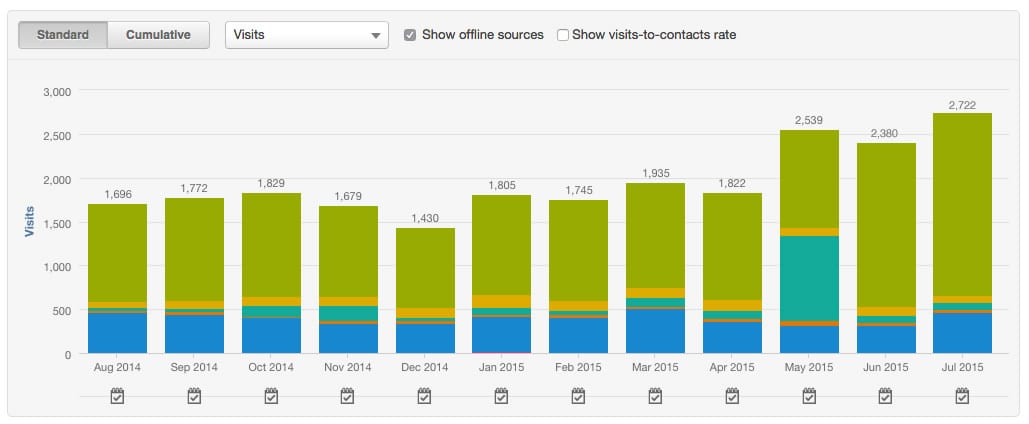
Inbound marketing in the hunting, firearms, and outdoor industry is starting to grow. More and more brands like Havalon, Beretta, Springfield, Mossberg and others are integrating inbound marketing (sometimes confused with content marketing) into their outbound marketing budgets (print, t.v. and tradeshow). Content marketing is defined as “a strategic marketing approach focused on creating and distributing valuable, relevant and consistent content to attract and retain a clearly defined audience—and ultimately, to drive profitable customer interaction.” (Source: CMI) Inbound marketing earns the attention of customers, makes the company easy to be found, and draws customers to your website by producing interesting content.
Buying firearms and hunting equipment is a long sales process due to cost, and the hundreds of choices buyers have to choose from. Inbound by nature is a highly effective methodology in educating your customers, dealers, distributors, and wholesalers about your products and brand that can speed up the buying process.
In this post, I share seven indicators I’ve seen that will determine the difference between a stellar inbound marketing program or a mediocre one.
1. Low Saturation Index
A quick search on Google will reveal the amount of content you must contend with when starting an inbound marketing program of your own. Mark Schaefer calls this “content shock”—which means that there is so much content, that we simply don’t have the capacity to consume it all. When creating content, make sure that your brand has unique topics that you can bring to the table that will attract, convert, close and delight your customers.
2. Product-Market Fit
Does your product or service provide value to your customer? The quicker your customer can understand the value, the more you know your product has achieved product-market fit. Without an understanding of who your customer is and the problem your product or service solves—it will be very difficult to focus your content that will generate traffic, links, shares and the sales you’re looking for. (Source: Entrepreneur)
3. Audience
Great content marketers find their niche, and then write the heck out of the content that fits it. (Source: Outbrain) Does your brand own a niche in the industry that no one else serves? Can your content capitalize on creating a community of customers who are loyal to your brand that you can turn in to evangelists? We are fortunate in this industry to have many social media outlets and networks like AR15.com, Gun District, LinkedIn Groups and others that allow manufacturers to reach a captive audience of gun and hunting enthusiasts. Building a community of customers is also important that many top brands lack.
4. Web Domain
Did you just launch your website? The chances are that Google (the leading search engine with 89% of total web search traffic) may not index your domain for an entire year. I’ve seen first hand that when new websites are launched. Google keeps relevant blog posts and pages off the first page of results; keeping your site from gaining rankings. If this is the case, you may need to supplement your inbound marketing efforts with PPC and other outbound methods until your rankings improve.
5. Poor Competitor Content
Great content marketing starts with great content—and lots of it. (Source: Hubspot) A quick look at your competitors will reveal advantages or disadvantages that you can capitalize on or leverage. For example, if their content is poorly written, inconsistent, boring, self-promotional and doesn’t provide any real value—you have the opportunity to capture search engine rankings—which will benefit your efforts and customer preference when people are online looking for your kind of product.
6. Strong References
Another key component of inbound marketing is having strong references to draw from. Utilize others’ blogs and industry resources to back up your claims to ensure the information you are providing is accurate and relevant. This creates trust and credibility.
7. Price
The price of your products will also influence the success of your inbound marketing efforts. As noted above, inbound will work better when goods and services are above the $250 threshold. Products at this price point force consumers to examine products more carefully—opposite of an impulse buy. If you can’t determine what the buyers journey is from awareness to purchase, chances are you have a product that wouldn’t work well with inbound marketing.
By understanding how much content saturation is in your segment, your product/market fit, audience, web domain age, competitor weaknesses, availability of reliable references and a considered price point will help you create a more effective inbound marketing strategy.







